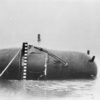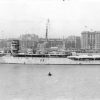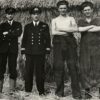In August 1927, nearly 50,000 people flocked to Portsmouth to attend the first Navy Week. Showcasing the power and prestige of the Royal Navy, battleships, cruisers, destroyers, mine-laying monitors, submarines, and an aircraft carrier were all either on view or available for close inspection. Attendees saw HMS Rodney and HMS Nelson, the two most modern […]








